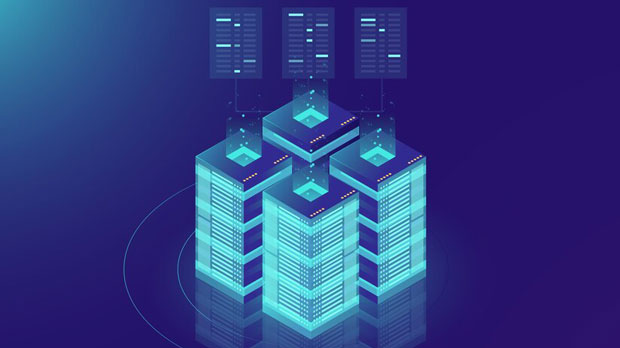In today’s rapidly evolving digital landscape, privacy and security concerns have become more prominent, especially for mobile users. A proxy server acts as an intermediary between a user's device and the internet, often providing benefits such as enhanced security, data encryption, and browsing anonymity. PYPROXY, a popular proxy solution, has gained attention for its flexibility and ease of use. This article delves into the experience of using PyProxy Proxy Server on mobile devices, assessing its performance, advantages, challenges, and how it caters to the unique needs of mobile users. By evaluating various aspects, this article offers valuable insights into whether PyProxy can be an effective solution for those seeking a safer and more efficient mobile browsing experience. Introduction to Proxy Servers on Mobile DevicesA proxy server acts as an intermediary between a device and the internet. When using a proxy server, mobile devices first connect to the server, which then makes requests to websites on behalf of the device. This process can improve browsing security, hide the user’s IP address, and provide access to geo-blocked content. For mobile users, where data security and speed are of utmost concern, using a proxy server like PyProxy could potentially enhance the overall internet experience. However, as mobile devices are designed with specific use cases and limitations, how well a proxy server works on these devices requires thorough examination. In the following sections, we will explore the PyProxy Proxy Server’s usability, speed, security features, and any challenges it might present when used on mobile platforms.Performance and SpeedOne of the most significant factors for mobile users is performance, especially concerning speed. Mobile devices often face constraints in terms of processing power and data transfer rates. PyProxy Proxy Server generally provides reliable performance, but how it performs under mobile conditions can vary.On mobile networks, especially those with lower bandwidth or inconsistent connectivity, using a proxy server may add some latency. This is because the data must travel through the proxy server before reaching the end destination. PyProxy attempts to minimize this delay, but heavy use or connections to distant proxy servers can result in slower browsing speeds.Nevertheless, PyProxy offers features such as automatic proxy selection, which can help find the nearest and fastest servers for mobile use. This can enhance the browsing experience, especially for users who prioritize speed while browsing or streaming content.Security Features for Mobile DevicesWhen using mobile devices, security is a major concern due to the vulnerability of mobile platforms to malware, phishing attacks, and data leaks. PyProxy Proxy Server offers several security benefits that can be essential for mobile users.Data Encryption: One of the core advantages of using PyProxy on mobile devices is the encryption it provides. By routing traffic through an encrypted tunnel, PyProxy ensures that sensitive data is protected from potential eavesdropping. This is particularly valuable when using unsecured public Wi-Fi networks, which are common for mobile users in cafes, airports, or other public spaces.IP Masking: PyProxy also masks the user’s real IP address, providing an additional layer of privacy. This can help protect against tracking and surveillance by websites or third parties, making it an essential tool for users who value anonymity while browsing on mobile devices.Bypassing Geo-Restrictions: For mobile users who frequently travel or access region-specific content, PyProxy can be a useful tool for bypassing geo-blocks. Whether it's accessing streaming services or using apps only available in certain regions, a proxy server helps users in accessing content that may otherwise be unavailable in their location.Compatibility with Mobile PlatformsFor any proxy server solution to be effective on mobile devices, it must be compatible with the operating systems and apps commonly used on these devices. PyProxy is designed to integrate smoothly with both Android and iOS platforms, although the configuration process may differ slightly between the two systems.On Android devices, PyProxy can be set up easily via manual configuration in the Wi-Fi settings or by using third-party apps designed to handle proxy connections. For iOS devices, the setup process is similarly straightforward, but users must ensure that they configure the proxy settings in the network settings to ensure proper routing of mobile traffic.Despite the compatibility, some users may face challenges with specific apps not working well with proxy servers. Certain applications, especially those with built-in security features, might detect the use of a proxy and restrict access. While PyProxy can bypass most restrictions, it is not always guaranteed that all apps will work seamlessly with the proxy enabled.Challenges and LimitationsWhile PyProxy offers a range of benefits for mobile users, it is not without its challenges. Understanding these limitations is crucial to ensuring that users know when and how to use PyProxy effectively.Device Performance Impact: Although the PyProxy proxy server itself is lightweight, its impact on device performance may still be noticeable, particularly on older or lower-end devices. Since mobile devices have limited processing power, the additional step of routing traffic through a proxy server can strain resources, leading to slower overall performance.Network Compatibility Issues: On mobile networks, such as 4G or 5G, the connection quality might vary significantly depending on location. In some areas, network congestion may further delay proxy server interactions. Additionally, certain mobile carriers may block or restrict the use of proxy servers, which can hinder PyProxy’s functionality.Battery Drain: Proxies often increase the load on a device’s processor due to the encryption and routing processes. This can lead to higher battery consumption, a common concern for mobile users who rely on long-lasting battery life.PyProxy Proxy Server's Usability for Different Mobile Use CasesWhen evaluating PyProxy’s usefulness for mobile users, it’s essential to consider the different use cases that vary between individuals. For users who frequently browse the web, stream videos, or use public Wi-Fi networks, PyProxy offers significant advantages in terms of security and privacy.For travelers who often need to bypass geo-restrictions, PyProxy is a helpful tool for ensuring access to region-specific content. However, for mobile gamers or users who require high-speed, low-latency connections, PyProxy may not always deliver the best performance.Overall, the usability of PyProxy Proxy Server depends largely on the user’s specific needs and expectations. Users who prioritize security and anonymity will benefit greatly from using PyProxy on their mobile devices. On the other hand, those who demand ultra-fast speeds or seamless app compatibility may face some limitations.Conclusion: Should You Use PyProxy on Your Mobile Device?In conclusion, PyProxy Proxy Server offers a solid set of features that enhance mobile browsing security, privacy, and access to restricted content. While its performance is generally reliable, users must be mindful of potential issues such as slower speeds, battery drain, and network compatibility challenges. For those who prioritize security and need access to geo-blocked content, PyProxy is a worthy choice for mobile devices. However, for users who require high-speed connections and flawless app compatibility, further consideration is necessary to assess whether PyProxy is the right tool for their needs.
Oct 26, 2025


































































